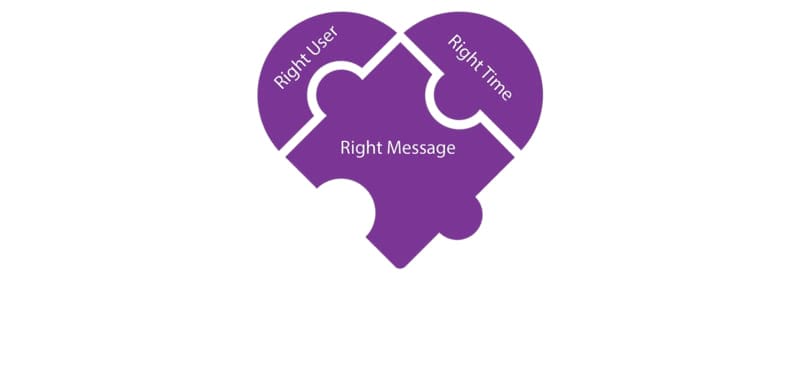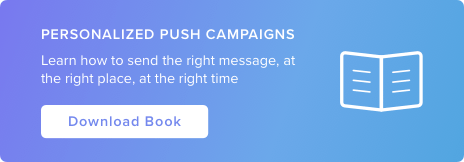5 Musts for Rock Solid Push Notifications

Push notifications are one of the most effective strategies to drive a user back to your mobile app. When a user opts into your notifications, they are trusting that you will deliver relevant and useful information. The moment you don’t achieve this, your notifications will be instantly shut off, or worse, your app gets deleted. With notification overload, it’s so critical that you are constantly delivering relevant information that brings your users joy driving them back to your app.
In this post, I want to share with you the five strategies you must implement in your push campaigns, so you delight your users with every message you send. With this approach, you can ensure you are delivering the right message, to the right user, at the right time.
1) Deliver a personal message with Segmentation
Segmentation allows you to divide your users into smaller groups so you can create a very targeted message. Your segments can be created based on such a wide variety of criteria you can start to get creative and make your users feel like your message was tailored directly for them.
Until you get a feel for your users, you can start off simple by sending push notifications based on a small number of criteria. For example, you can use a user location and gender to drive your users to shop for new swimwear during a Toronto heat wave.
“Hey, Toronto the heat wave is here, kick off summer in style with a new bathing suit. Shop today and shipping is free.”
You can then use their gender and direct your users to the right area within your app to complete their purchase.
2) Send a personalized message that’s actionable
The most successful pushes are those that resonate. Take advantage of your newly created segments and add some personalization with custom user properties. Even the smallest bit of personalization can go a long way to making your user feel like the message was created just for them. You can use their name, previous purchase history or any other custom data to add a personal note to your push.
“Hey Sarah, need a new top to go with your fancy new jeans? Our fall collection just arrived!”
Now that you have your users attention with a personal note make sure you drive action. It should be very clear to a user what they will see and do once they open your notification.
3) Send at the right time of day
Make sure you send your notifications at the right time of day, and your messages are set to send based on each individuals local time. Send your messages at a time of day you think your users will be able to spend the time to read and take action on your notification. Monday morning at the start of a workday might not be the best time to try and get your users to check out your new fall line.
4) Find the right frequency
Listen to your users and let them help you determine how often you should send notifications. At first, this will be very much trial and error but if the messages you are sending are driving action then start adding a few more to the schedule. Keep a close eye on your campaigns and you will start to get a sense of the ideal number of pushes to send.
5) A/B test
A/B test to optimize your entire campaign. Whether you want to determine the right messaging, right time of day, or how often you should send a notification it’s all possible by testing one idea against another. Your push strategy should constantly be changing. There isn’t a sure thing secret formula that everyone can use. The only way to build a successful campaign is to experiment, learn from what you have already tried, and keep iterating. Every business and user base are very different so keep experimenting to find a campaign that works for you.

